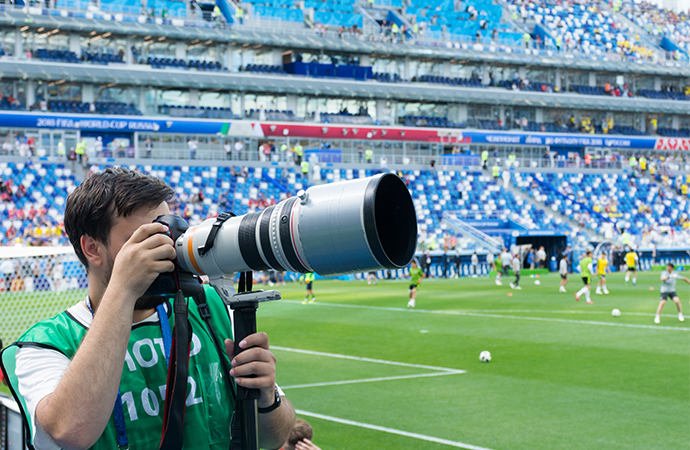A day in the life of a sports photographer is fast-paced and dynamic, filled with excitement and challenges. Here’s a glimpse into what their typical day might look like:
Morning: Preparation and Planning
- Gear Check: The day usually starts with a thorough check of all the equipment. This includes cameras, lenses, batteries, memory cards, and any additional accessories. Ensuring everything is in working order is crucial for capturing those split-second moments.
- Weather Check: Sports photographers need to be aware of the weather conditions, as they can significantly impact the shoot. Rain, snow, or intense sunlight all pose different challenges, and photographers need to prepare accordingly.
- Game Analysis: Understanding the sport they’ll be covering is essential. Knowing the rules, key players, and anticipated moments helps photographers anticipate and position themselves for the best shots.
Midday: Travel and Setup
- Arrival at the Venue: Sports photographers often need to arrive well before the event starts. This allows them to scout the venue, plan their shooting positions, and set up any remote cameras if necessary.
- Meeting with Organizers: If it’s a major event, photographers might have a meeting with event organizers, team representatives, or other photographers to coordinate and get information about any specific guidelines or restrictions.
- Setting up Remote Cameras: For larger events, photographers might set up remote cameras in strategic locations, such as goalposts or behind the backboard. This ensures they can capture shots from unique angles without being in the way of the action.
During the Event: Capturing the Action
- Positioning: Sports photographers need to constantly move to find the best angles and perspectives. They often have designated spots on the sidelines, but adapting to the game’s flow is crucial for capturing key moments.
- Continuous Shooting: Action in sports happens quickly, so photographers use continuous shooting mode to capture a series of images in rapid succession. This increases the chances of getting the perfect shot.
- Adapting to Lighting Conditions: Lighting in sports venues can be challenging, especially if it’s an indoor event. Photographers must be skilled in adjusting their camera settings to accommodate different lighting conditions.
Post-Event: Editing and Transmitting
- Image Selection: After the event, photographers go through the hundreds or even thousands of shots they took, selecting the best ones. They look for images that capture the intensity, emotion, and key moments of the game.
- Editing: Professional sports photographers often spend time editing their photos to enhance colors, sharpness, and overall quality. This step is crucial for creating visually stunning images.
- Transmitting Images: In the age of instant media coverage, photographers might need to transmit their images quickly to news agencies, sports organizations, or their own agencies. This involves a fast and reliable internet connection.
Evening: Debrief and Preparation for the Next Day
- Debrief: Sports photographers may have a debrief session with editors or colleagues to discuss the day’s highlights, challenges, and any adjustments needed for the next event.
- Equipment Maintenance: Cleaning and maintaining gear is essential for longevity. Batteries are recharged, lenses cleaned, and any issues addressed to ensure everything is ready for the next day.
- Research for Tomorrow: If there’s another event the next day, photographers might spend some time researching the teams, players, and potential storylines to be better prepared.
In essence, the life of a sports photographer is a perfect blend of passion for the sport, technical expertise, and adaptability to ever-changing conditions. Each day brings a new set of challenges and opportunities to capture the essence of the game through their lenses.


